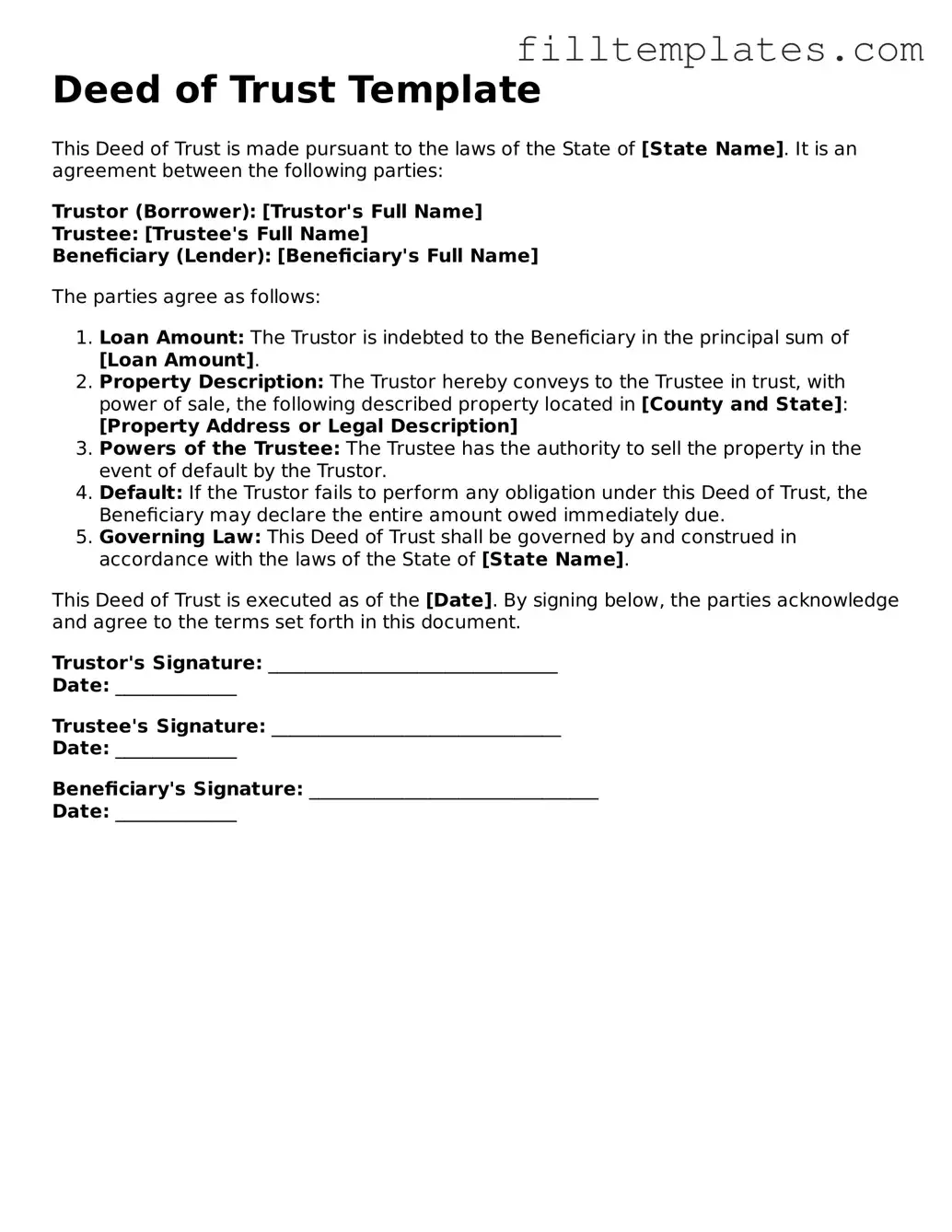Deed of Trust Template
This Deed of Trust is made pursuant to the laws of the State of [State Name]. It is an agreement between the following parties:
Trustor (Borrower): [Trustor's Full Name]
Trustee: [Trustee's Full Name]
Beneficiary (Lender): [Beneficiary's Full Name]
The parties agree as follows:
- Loan Amount: The Trustor is indebted to the Beneficiary in the principal sum of [Loan Amount].
- Property Description: The Trustor hereby conveys to the Trustee in trust, with power of sale, the following described property located in [County and State]:
[Property Address or Legal Description]
- Powers of the Trustee: The Trustee has the authority to sell the property in the event of default by the Trustor.
- Default: If the Trustor fails to perform any obligation under this Deed of Trust, the Beneficiary may declare the entire amount owed immediately due.
- Governing Law: This Deed of Trust shall be governed by and construed in accordance with the laws of the State of [State Name].
This Deed of Trust is executed as of the [Date]. By signing below, the parties acknowledge and agree to the terms set forth in this document.
Trustor's Signature: _______________________________
Date: _____________
Trustee's Signature: _______________________________
Date: _____________
Beneficiary's Signature: _______________________________
Date: _____________
